Finally, a place to book a bed in Everglades National Park. It’s in a posh metal box
For the past 15 years, Everglades National Park visitors hoping to spot a roseate spoonbill in dawn flight or see a sunset over Florida Bay had just a couple of options to stay the night: pitching a tent in a soggy campsite swarmed by fierce mosquitoes or parking a trailer at an RV site.
This year, the park finally will begin to offer civilized lodgings again — but highly unconventional ones.
The park, which razed the rustic landmark Flamingo Lodge after a string of damaging hurricanes, is going to put visitors in converted steel shipping containers. As big metal boxes go, however, these will be very posh — 24 studio, one- or two-bedroom cabins complete with air-conditioning, bathrooms and comfy beds.
It’s time to finally cross the Everglades off your bucket list. Here’s what to do
The innovative new lodgings are a key piece of a plan long in the works to restore and revive Flamingo, an isolated outpost on the park’s southern tip that was once a popular spot for winter visitors. The hotel-like shipping containers are scheduled to be open for business by November, just in time for the start of the next high season for park tourism.
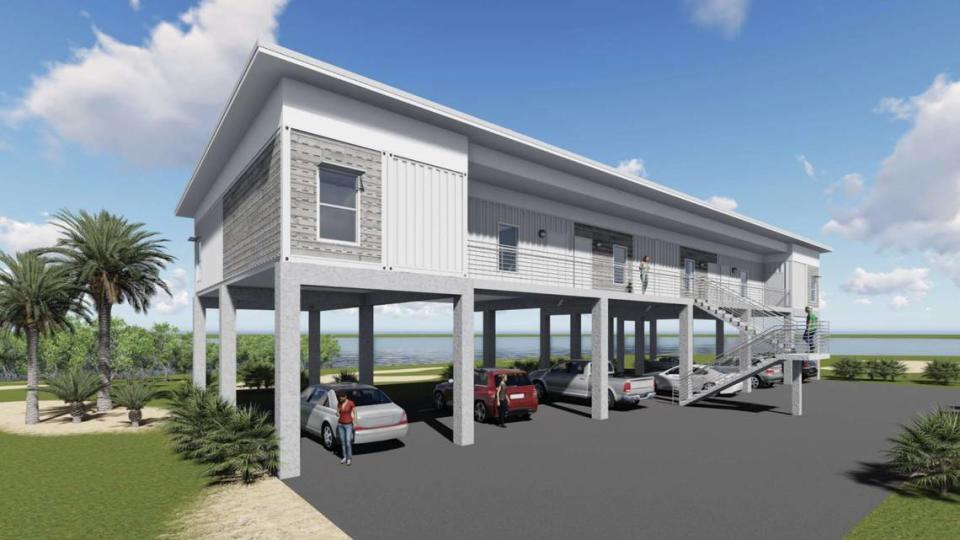
“Not only are we focusing on restoring the Everglades, we’re also focused on improving the visitor experience in the park to match the world-class recognition that the Everglades enjoys,” said Pedro Ramos, Superintendent of Everglades and Dry Tortugas National Parks.
The makeover also comes at a time of increased funding and focus on Everglades restoration: a 2021 budget proposal from the Trump administration earlier this month seeks a quarter-billion dollars toward projects to revive water quality and flow through an ecosystem starved for more water in the southern Glades and Florida Bay.
The high projected cost of rebuilding a hotel for a park service already facing some $11 billion in maintenance backlogs across the country was a major hurdle to restoring Flamingo. The storage containers will allow faster modular construction, more like assembling Lego blocks.
Four to six cabins will be connected to form a building that resembles an elevated military barracks, according to a rendering of the project, which also shows covered parking underneath. A crew just broke ground last week by building a fence around the site to prevent protected saltwater crocodiles from nesting in the area.
The structures will be elevated at least 17 feet and could — at least potentially — be hauled away before a hurricane and storm surge rolls into the low-lying coastline. Room rates are still under consideration but a comfortable, mosquito-free overnight stay deep in the Everglades is an enticing proposition that will probably be worth a splurge. A bucket-list kind of thing. South Florida anglers, hunting fish deep in the back country, also used to regularly fill the old Flamingo Lodge.
‘Glamping’ in eco-tents
Late last year, the park expanded camping options as well, erecting 20 “eco-tents” on a portion of the walk-in campground at Flamingo.
It’s not quite “glamping” yet, but the waterfront lodgings which opened last November are definitely a step up from a sleeping bag on the floor. The canvas tents have sturdy metal frames designed to withstand a Category 4 hurricane and have small covered porches with chairs. They are built on stilts and are connected by boardwalks to a picnic area with tables and fire rings.
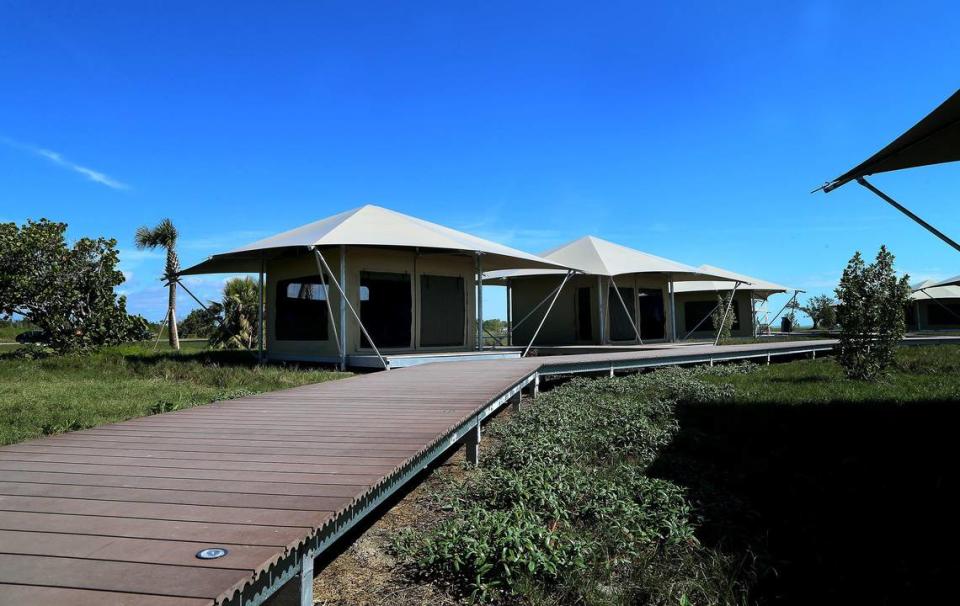
The luxury comes in the shape of real beds: one queen or two double beds, depending on the tent. They are like fancy hotel beds, with thick mattresses, white cotton linens and fluffy pillows. Each tent has a large box fan and a lantern where cellphones can also be charged. But the best features are the oversized screen windows that keep mosquitoes outside while bringing the beauty of the Everglades and expansive views of Florida Bay inside.
The comfort comes at a price: Between $100 a night during the week and $150 on weekends and holidays. And the not-so-glam part of staying in the eco-tents is the bathroom. Tent guests share the campground’s bathhouse with campers, and when occupancy is near full, maintenance staff can’t keep up. Also, the two showers each in the women’s and men’s bathrooms have very limited hot water from a small solar system installed nearby.
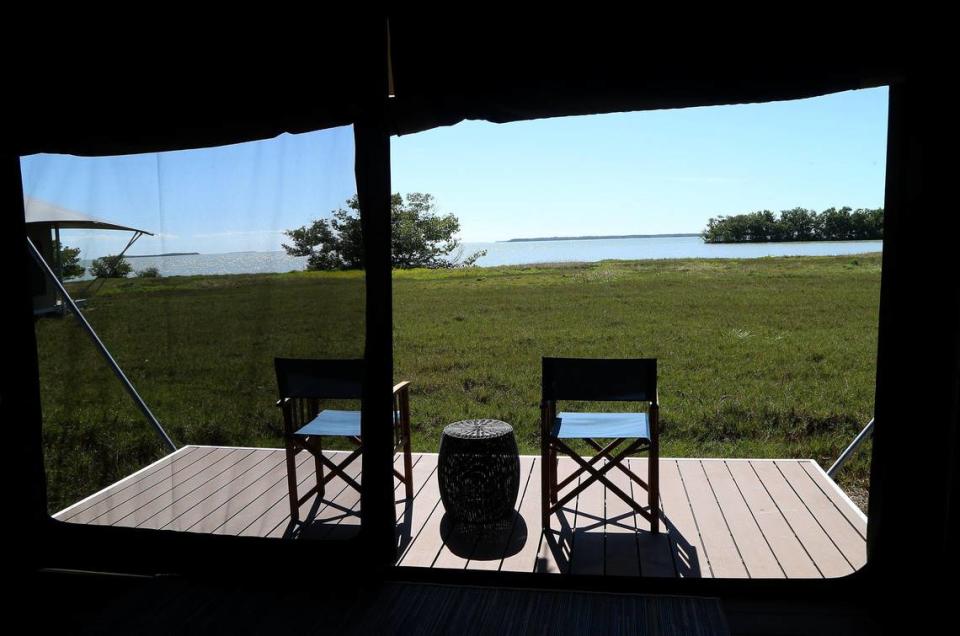
“It was a bit expensive but worth it because I didn’t want to camp and sleep on the ground,” said Christina Farhy from Miami. She spent one night in January with her husband and 3-year-old son.
“Staying in a tent with a bed gave us more time to explore and to enjoy nature,” she said. Farhy rented a canoe at the marina and paddled the Buttonwood Canal to Coot Bay and Mud Lake. “We saw dozens of varieties of birds, alligators, crocodiles, manatees; our little wildling had an amazing time.”
Where alligators and crocodiles hang out
Flamingo still shows the wear and tear of hurricanes. The old visitor center — painted a vibrant pink in 2010 — is still in disrepair after Hurricane Irma in 2017 dealt one last blow to the historical but neglected building, making it unsafe for public use.
But there is still plenty to do for visitors, who can rent kayaks, bikes, canoes and even houseboats to explore Whitewater Bay, the back country waters and maze of mangrove islands north of Flamingo.
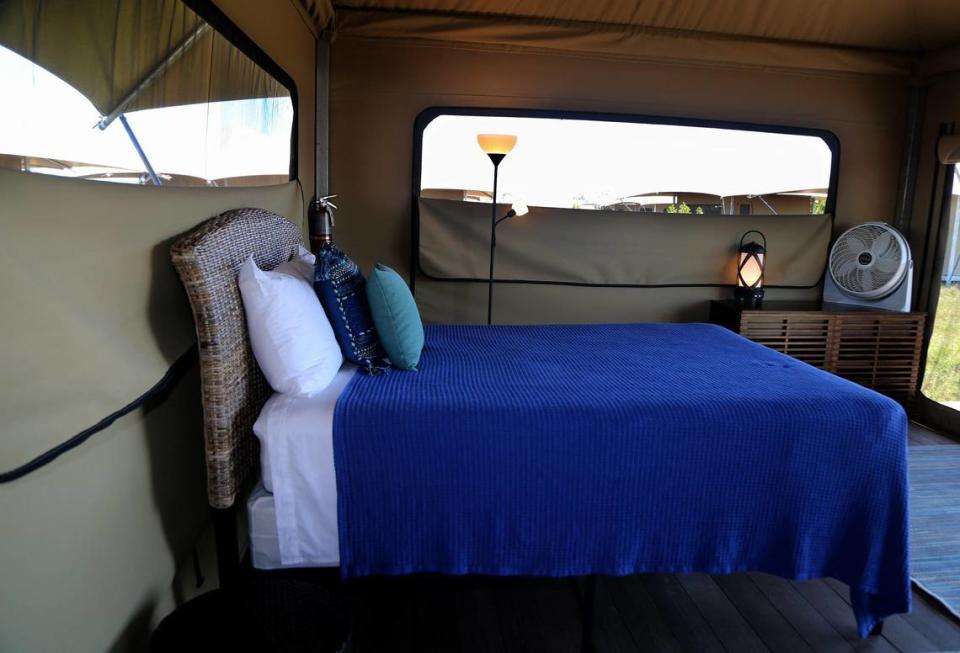
A large crocodile affectionately called Freddy is often seen sunning on a log right in front of the kayak dock, greeting visitors as they set out to explore the canal that leads to Whitewater and Coot bays. Ninety-minute boat tours of the back country and Florida Bay are also available.
Depending on the time of year, visitors might just see two iconic Everglades species in one day: crocodiles and alligators. The Everglades is the only place in the world where that happens, and the coastal, brackish-water habitats around Flamingo are prime spots for crocs. Manatees also like to hang around the canals and are often seen nibbling on mangroves.
Though there is no longer a restaurant, a convenience store in the marina sells the basics: cold beer, water, sunscreen, bug spray and snacks that can be heated up in a couple of microwaves. A trailer on the parking lot now serves as a visitor center where rangers update a “mosquito meter” every day: enjoyable, bearable, unpleasant, horrible and hysterical, when visitors abandon their camping gear, lock themselves in their air-conditioned cars and race back to civilization.
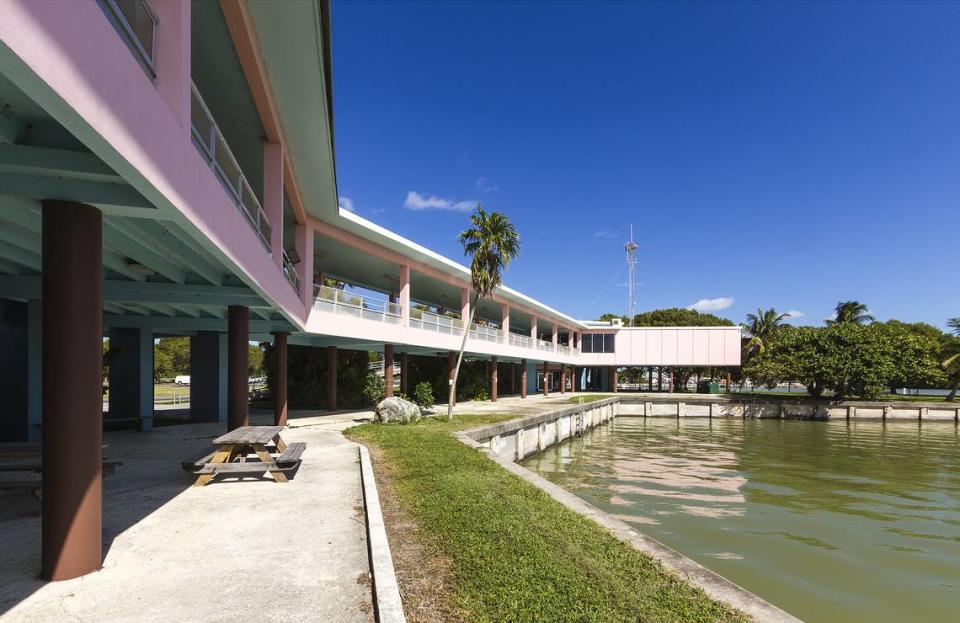
Ramos said the park is gradually improving guest experiences after the National Park Service in 2017 selected concessionaire Guest Services, Inc., to provide visitor services at the park for 20 years, with $5.5 million in expected construction and improvement projects. The park service is expected to pay $5 million back to the company after the projects are completed, in a concession contract known as leasehold surrender interest.
Before that decision, park managers went back and forth for over a decade on how and what to rebuild at the isolated outpost that used to attract anglers and visitors looking for a dose of the Everglades with basic amenities: the old lodge had 60 rooms with beds and a shower, but not much more.
In addition to the new lodgings and the eco-tents, current projects also include the complete renovation of the visitor center building including new exhibits, and updating water lines and replacing sewage lift stations. A jewel of the country’s national parks, the old bright pink building was one of eight pilot projects built in the 1950s as part of what’s known as the Mission 66 plan to attract the post-war generation that was starting to travel by car.

